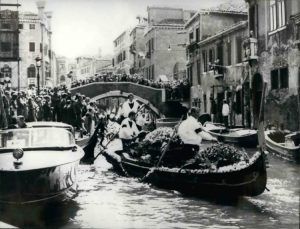Sudip Bose at The American Scholar:

The origins of this masterpiece can arguably be traced to 1948, the year Stravinsky met Robert Craft, who was then a 25-year-old musician schooled in the works of the Second Viennese School. Stravinsky employed the young man as his secretary, but over time, the two artists became colleagues as well as friends, with Stravinsky assuming the role of father figure and Craft taking up residence in the composer’s household. For Craft, the 12-tone music of Arnold Schoenberg and Anton Webern was gospel, and he was eager to nudge Stravinsky toward serial techniques. “I say in all candor,” Craft would later write, not without a touch of hubris, “that I provided the path and that I do not believe Stravinsky would ever have taken the direction that he did without me.”
Stravinsky may have initially found 12-tone music cold, clinical, and abstract, but he also feared being judged an anachronism were he not to, at the very least, explore this terrain. Craft was no doubt a guiding light, and Stravinsky’s 1952 Cantata incorporated several serial elements. Subsequent pieces, such as the Canticum sacrum (1955) and Movements for Piano and Orchestra(1959), are full-blooded serial works, though Stravinsky was never one to adhere dogmatically to any method, and he adapted 12-tone techniques into his own distinctive idioms.
more here.
